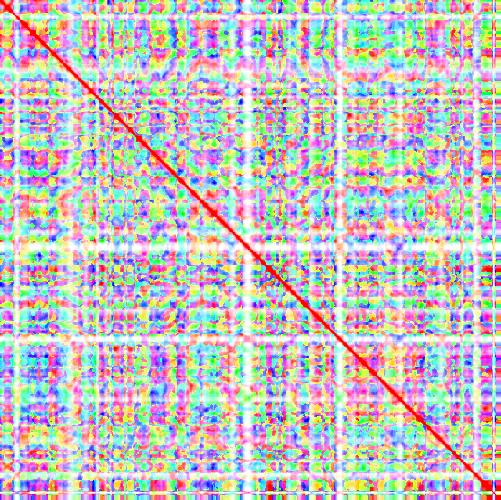05. Der Lindenbaum. (The Linden Tree)

Modified strophic form in E major containing six stanzas. [more]
Cyclic Fourier tempogram (8 sec) correlated to rhythm (intensity) and tempo (color). [more]
Singer: Gerhard Hüsch (Baritone), Piano: Hanns-Udo Müller. Recorded on vinyl, April-September 1933.
Source, License: EA Terms of Use
Information about our segmentation of »05. Der Lindenbaum«
Modified strophic form in E major containing six stanzas.
Coarse segmentation: ternary form ABA';
First part contains an intrumental introduction in E major as well as two slightly different segments which are divided by an intrumental interlude in e minor.
Both of these segments consists of two parts: Aa1+Ab and Aa2+Ab, respectively. The segment Aa1 corresponds to first stanza, Ab to second, Aa2 to third, and repetition of Ab to fourth stanza.
First segment Aa1+Ab is in E major; Aa2 and I2 in e minor, Ab is in E major again.
Middle part B has two subparts: one sung part and another instrumental interlude leading to the last part of the song.
This last part consists of repetitions Aa1, B, and I1. It corresponds to sixth stanza and its repetition.
Lyrics: Project Gutenberg
Tempogram
This feature corresponds to rhythmic properties of a musical piece as well as tempo. A tempogram is computed similar to a spectrogram by short-time Fourier transform or using autocorrelation function. It represents periodic occurances of high energy in the waveform and hence is used to estimate tempo and beat positions. To reduce jumps between a certain tempo value and its multiples, a cyclic variant is used where we identify all tempo multiples similar to the computation of chroma from pitch features. Subsequently, the resulting tempo features are quantized, smoothed (in temporal direction), and normalized with respect to the ℓ2-norm.
In the spirit of the transposition-invariant chroma-based SSM, we compute something similar for cyclic tempo features also. Although the properties of this matrix are not discovered yet, we present this representation to show that the transposition index carries some meaningful information. We guess that this can be used to separate information about rhythm and tempo. In this case, we use a standard HSV colormap.
Literature
- Geoffroy Peeters: Time variable tempo detection and beat marking, ICMC 2005.
- Peter Grosche, Meinard Müller, Frank Kurth: Cyclic tempogram – a mid-level tempo representation for music signals, ICASSP 2010, pp. 5522–5525.
- Peter Grosche, Meinard Müller: Tempogram toolbox: Matlab implementations for tempo and pulse analysis of music recordings., ISMIR 2011.
